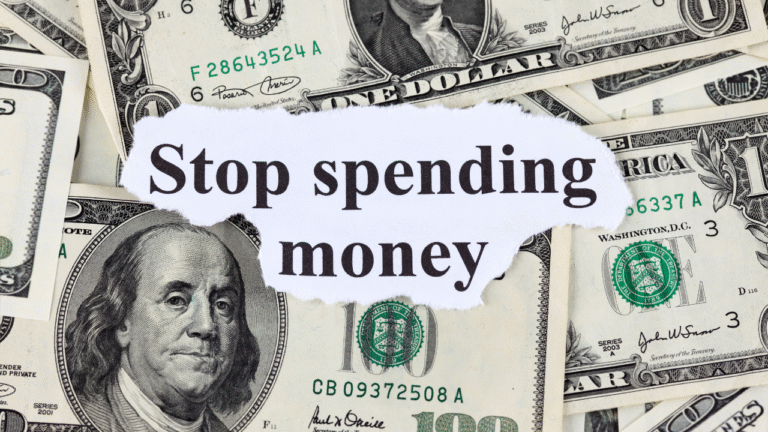Best Budgeting Apps for Couples Who Share Expenses Unequally
Managing money as a couple becomes especially tricky when you don’t split everything 50/50. Whether one partner earns significantly more, has different spending habits, or you’re navigating shared expenses like rent while maintaining separate discretionary budgets, finding the right budgeting apps for couples can transform your financial harmony.
In 2025, with inflation affecting everything from grocery bills at Walmart to utility costs, budgeting apps for couples need smarter tools to track unequal expense sharing without the stress. This comprehensive guide explores the best budgeting apps for couples designed specifically for those who don’t follow traditional 50/50 splits.
Table of Contents
Why Traditional Budgeting Falls Short for Modern Couples
Most budgeting advice assumes couples split everything equally. But real life looks different. According to recent Federal Reserve data, 43% of couples maintain some level of separate finances, with many choosing proportional expense sharing based on income differences.
Consider Sarah and Mike from Denver. She’s a teacher earning $45,000 annually, while he’s a software developer making $85,000. Splitting their $2,200 monthly rent equally would consume 59% of Sarah’s take-home pay but only 31% of Mike’s. This disparity creates financial stress that traditional budgeting methods can’t address.
The best budgeting apps for couples have evolved to handle these real-world scenarios, offering features like:
- Proportional expense splitting
- Individual spending tracking alongside shared goals
- Automatic bill allocation based on predetermined ratios
- Financial goal setting with unequal contributions
Top 8 Budgeting Apps for Couples With Unequal Expenses
Finding the right budgeting apps for couples requires understanding your unique financial dynamic. Here are the top solutions for unequal expense sharing:
1. Honeydue – The Relationship-First Approach
Honeydue stands out among budgeting apps for couples by prioritizing communication alongside money management. This free app connects both partners’ accounts while maintaining privacy boundaries.
Key Features:
- Real-time expense notifications for both partners
- Bill reminder system with custom splitting options
- In-app messaging to discuss purchases before they happen
- Category-based spending limits with partner accountability
Best For: Couples who want transparency without giving up individual autonomy.
Unique Advantage: The app sends push notifications when your partner makes purchases over preset amounts, fostering natural money conversations.
2. Splitwise – Mathematical Precision for Complex Splits
While not exclusively designed as budgeting apps for couples, Splitwise excels at handling intricate expense sharing scenarios that many couples face. The app’s sophisticated algorithms handle complex splitting arrangements that traditional budgeting tools can’t manage.
Key Features:
- Percentage-based splitting for recurring expenses
- Receipt scanning with automatic categorization
- Integration with Venmo and PayPal for instant settlements
- Detailed expense history with notes and photos
Real-Life Example: Lisa and James use Splitwise for their shared Costco runs. Lisa covers groceries upfront, then the app automatically calculates James owes 60% based on their income ratio arrangement.
Best For: Detail-oriented couples who want precise tracking of who owes what.
3. YNAB (You Need A Budget) – The Gold Standard for Serious Budgeters
YNAB’s envelope method works exceptionally well for budgeting apps for couples practicing unequal expense sharing, though it requires more setup time than other options. The platform’s comprehensive approach makes it ideal for couples serious about long-term financial planning.
Key Features:
- Joint and separate budget categories within one system
- Goal-based savings with proportional contributions
- Real-time synchronization across devices
- Extensive educational resources from YNAB’s blog for couples
Cost: $14.99/month or $109/year (often worth it for serious budgeters)
Best For: Couples committed to comprehensive financial planning who don’t mind a learning curve.
4. PocketGuard – Simplicity Meets Smart Spending
PocketGuard’s “In My Pocket” feature helps couples track individual discretionary spending while managing shared expenses responsibly.
Key Features:
- Automatic categorization of shared vs. individual expenses
- Bill negotiation services for shared utilities
- Spending insights with couple-friendly visualizations
- Free basic version with premium features available
2025 Update: PocketGuard recently added inflation-adjusted budget recommendations, particularly valuable as couples navigate rising costs for essentials like gas and groceries.
5. Mint – Comprehensive Financial Overview
Though Intuit discontinued new Mint accounts in 2024, existing users still benefit from its robust couple-friendly features. Consider Mint alternatives like Credit Karma or transition to newer solutions.
Legacy Features Worth Noting:
- Joint account monitoring with individual spending categories
- Bill tracking with customizable due date reminders
- Free credit score monitoring for both partners
- Investment tracking for shared and separate portfolios
6. Goodbudget – Envelope Method Without the Paper
Goodbudget digitizes the classic envelope budgeting system, making it perfect for couples who want to allocate shared expenses proportionally.
Key Features:
- Virtual envelopes for different expense categories
- Sync between unlimited devices
- Debt tracking with payoff planning
- Detailed spending reports
Best For: Couples who prefer the psychological benefits of envelope budgeting but want digital convenience.
7. EveryDollar – Dave Ramsey’s Approach for Couples
Created by financial guru Dave Ramsey, EveryDollar emphasizes zero-based budgeting that works well for couples with unequal incomes.
Key Features:
- Monthly budget creation with partner collaboration
- Percentage-based allocation recommendations
- Integration with Ramsey+ educational content
- Premium bank connectivity for automatic transactions
Best For: Couples following Dave Ramsey’s financial principles or those new to systematic budgeting.
8. Tiller – Spreadsheet Power With Modern Convenience
For couples who love spreadsheet control but want automated data feeds, Tiller offers the best of both worlds.
Key Features:
- Automated bank transaction imports to Google Sheets
- Customizable templates for couple-specific needs
- Advanced categorization and reporting capabilities
- Month-to-month subscription flexibility
Cost: $6.58/month (billed annually)
Best For: Spreadsheet enthusiasts who want granular control over their couple’s financial tracking.
How to Choose the Right Budgeting Apps for Couples
Selecting the perfect budgeting apps for couples depends on several key factors that reflect your relationship’s unique financial dynamics:
Consider Your Communication Style
High Communication Couples: Budgeting apps for couples like Honeydue that encourage financial discussions work well.
Independent Operators: Choose solutions like YNAB or Tiller that allow separate management of joint goals.
Conflict Avoiders: Automated apps like PocketGuard minimize the need for difficult money conversations.
Evaluate Your Technical Comfort Level
Tech-Savvy: Tiller or advanced YNAB features provide maximum customization.
Simplicity Seekers: PocketGuard or Goodbudget offer straightforward interfaces.
Middle Ground: Honeydue and EveryDollar balance functionality with ease of use.
Factor in Your Financial Complexity
Simple Finances: Free apps like Honeydue or Goodbudget basic version suffice.
Multiple Accounts/Investments: YNAB or Tiller handle complexity better.
Debt Payoff Focus: EveryDollar’s debt tracking features provide targeted support.
Setting Up Your Chosen App: A Step-by-Step Guide
Phase 1: Financial Inventory (Week 1)
- List all shared expenses: Rent, utilities, groceries, insurance, streaming services
- Calculate individual contributions: Determine fair ratios based on income, preferences, or other factors
- Identify separate expenses: Personal shopping, individual hobbies, separate debt payments
- Set joint financial goals: Emergency fund, vacation savings, home down payment
Phase 2: App Configuration (Week 2)
- Connect accounts: Link bank accounts, credit cards, and investment accounts as appropriate
- Create categories: Establish spending categories that reflect your actual lifestyle
- Set up splitting rules: Configure how shared expenses will be allocated
- Establish spending limits: Create boundaries for individual and joint spending
Phase 3: Routine Development (Weeks 3-4)
- Daily check-ins: Quick app reviews become habit-forming
- Weekly money dates: Schedule regular financial discussions using app data
- Monthly reviews: Analyze spending patterns and adjust budgets as needed
- Quarterly goal assessment: Evaluate progress toward joint financial objectives
Common Pitfalls and How to Avoid Them
The “Set It and Forget It” Trap
Problem: Couples install apps but don’t maintain them regularly.
Solution: Schedule weekly 15-minute “money dates” to review app data together. Make it enjoyable with coffee or wine.
Over-Complicating Categories
Problem: Creating too many spending categories leads to decision fatigue.
Solution: Start with broad categories (Housing, Food, Transportation, Personal) and subdivide only if needed.
Quick Tip: Most successful couples use 8-12 categories maximum.
Ignoring the Emotional Side
Problem: Focusing solely on numbers without addressing spending emotions.
Solution: Use app data as conversation starters, not ammunition for arguments.
Privacy Boundary Confusion
Problem: Unclear expectations about financial transparency.
Solution: Explicitly discuss what stays private versus what gets shared before choosing an app.
Advanced Strategies for Unequal Expense Sharing

The Proportional Method
Calculate each partner’s contribution based on income percentages. If Partner A earns 60% of household income, they cover 60% of shared expenses.
Example: Monthly shared expenses total $3,000. Partner A (earning $6,000/month) pays $1,800. Partner B (earning $4,000/month) pays $1,200.
The Base + Proportional Hybrid
Each partner covers a base amount equally, then splits remaining expenses proportionally.
Example: Each partner pays $800 base, then splits remaining $1,400 based on 60/40 income ratio.
The Category-Specific Approach
Different expenses use different splitting methods based on usage or preferences.
Example:
- Rent: Proportional to income
- Groceries: 50/50 split
- Utilities: Based on actual usage
- Entertainment: Person who suggests pays
Financial Goal Setting for Couples With Unequal Contributions
Emergency Fund Building
Strategy: Each partner contributes proportionally to a shared emergency fund while maintaining individual emergency savings.
2025 Benchmark: Aim for 6-12 months of shared expenses (increased from traditional 3-6 months due to economic uncertainty).
Vacation and Fun Money
Approach: Create shared “fun” categories funded proportionally, plus individual discretionary spending accounts.
Real Example: The Johnsons from Austin allocate $500 monthly to shared entertainment (60/40 split based on income) plus $200 each for individual fun money.
Retirement Planning
Consideration: Partners with different incomes may need different retirement savings strategies while still supporting joint goals.
[Insert related SmartSaveUSA link here]
Home Ownership Preparation
Challenge: Saving for a down payment when incomes differ significantly.
Solution: Use apps to track proportional contributions to a joint savings goal while building individual credit scores through separate financial responsibility.
The Psychology of Money in Relationships
Understanding financial personalities helps couples choose appropriate budgeting tools and strategies.
Spender vs. Saver Dynamics
Spender traits: Values experiences, may underestimate spending, responds to visual spending apps
Saver traits: Security-focused, detail-oriented, prefers comprehensive tracking tools
App Recommendation: Couples with opposing tendencies benefit from apps like Honeydue that provide spending notifications without being judgmental.
Control vs. Flexibility Preferences
Control-oriented: Prefers detailed categorization and precise tracking (YNAB, Tiller)
Flexibility-focused: Wants general guidelines without micromanagement (PocketGuard, Goodbudget)
Communication Styles
Direct Communicators: Benefit from apps with built-in messaging features
Conflict Avoiders: Need automated solutions that minimize negotiation needs
Technology and Security Considerations

Bank-Level Security Features to Look For
When evaluating budgeting apps for couples, prioritize platforms that offer:
- 256-bit SSL encryption
- Multi-factor authentication
- Read-only bank connections
- Regular security audits
The Consumer Financial Protection Bureau recommends verifying these security features before connecting any financial accounts to third-party applications.
Data Privacy Concerns
Important: Understand how apps use your financial data. Some sell anonymized spending patterns to marketers.
Recommendation: Prioritize apps with strong privacy policies and minimal data sharing.
Backup and Recovery Plans
Essential: Ensure your chosen app provides data export options in case you need to switch platforms.
Budgeting Apps and Tax Implications
Expense Deduction Tracking
Some couple expenses may qualify for tax deductions, particularly for:
- Home office expenses (if both partners work from home)
- Business meals and entertainment
- Charitable contributions
Record Keeping Requirements
The IRS requires documentation for deductible expenses. Choose budgeting apps for couples that:
- Store receipt images
- Export detailed expense reports
- Categorize expenses by tax relevance
External Authority Link: According to IRS Publication 463, proper expense documentation includes amount, time, place, and business purpose for deductible expenses.
Future-Proofing Your Financial Management
Apps and Life Changes
Consider how your chosen app handles:
- Marriage and divorce proceedings
- Job changes affecting income ratios
- Adding children to the family budget
- Home purchases or major life transitions
Scalability Considerations
Growing Complexity: Choose apps that can grow with your financial complexity rather than requiring platform switches.
Multiple Properties: Consider whether you might need to track rental income or multiple residences.
Integration Capabilities
2025 Trend: Look for apps that integrate with:
- Tax preparation software
- Investment platforms
- Banking apps and financial institutions
- Credit monitoring services
Measuring Success: Key Performance Indicators for Couples

Financial Harmony Metrics
- Reduced money-related arguments (subjective but important)
- Increased savings rate (aim for 20% of combined income)
- Improved credit scores for both partners
- Progress toward joint financial goals
App-Specific Success Indicators
Consistency: Regular app usage without nagging or reminders
Accuracy: Spending stays within predetermined budgets 80% of the time
Communication: App data facilitates productive money conversations
Goal Achievement: Meeting savings milestones and debt reduction targets
Alternative Solutions Beyond Traditional Apps
Hybrid Approaches
Bank-Based Solutions: Many major banks now offer couple-friendly budgeting tools within their existing platforms.
Credit Card Strategies: Using rewards credit cards strategically for shared expenses while tracking individual spending separately.
When to Consider Professional Help
When to Consider: Couples with significant income disparities, complex financial situations, or persistent money conflicts may benefit from professional guidance beyond what budgeting apps for couples can provide.
Cost-Benefit Analysis: Financial planning fees may be worthwhile for couples managing substantial assets or complex financial goals. The National Association of Personal Financial Advisors provides resources for finding fee-only financial planners who can work alongside your chosen budgeting app.
Real-World Success Stories: How Budgeting Apps for Couples Make a Difference
Case Study 1: The Tech Couple
Background: Two software engineers with a $40,000 income difference needed a fair way to manage finances.
Solution: They chose YNAB, one of the most popular budgeting apps for couples, using a proportional sharing system (65/35 split).
Result: With this approach and the help of expense tracking apps for couples, they boosted their joint savings from $500 to $2,000 per month while preserving individual financial autonomy.
Case Study 2: The Teacher-Entrepreneur Duo
Background: A school teacher earning $48,000 married to a small business owner with a fluctuating income ($60,000–$120,000).
Solution: They opted for Honeydue, known as one of the best expense tracking apps for couples, offering a flexible contribution system tailored to varying incomes.
Result: By leveraging this budgeting app for couples, they successfully handled income volatility, built an emergency fund, and started planning for a home purchase.
Case Study 3: The Debt Payoff Journey
Background: A couple burdened with unequal debts and different money management habits sought a unified plan.
Solution: They used EveryDollar, one of the top budgeting apps for couples, combined with the debt snowball strategy for structured repayment.
Result: With consistent tracking through expense tracking apps for couples, they eliminated $85,000 in debt within three years—without straining their relationship.
Frequently Asked Questions
Q1. What is the best budgeting app for couples in 2025?
People often want to know the latest and most reliable apps to manage shared finances effectively.
Q2. How do couples split expenses fairly using apps?
This question targets users looking for tools with automatic tracking and fair expense-splitting features.
Q3. Are budgeting apps for couples free or paid?
Americans frequently search for cost comparisons between free budgeting tools and premium versions.
Q4. Can budgeting apps sync with multiple bank accounts?
Many couples want to connect different bank accounts to track joint expenses in real time.
Q5. Which budgeting app works best for unequal income couples?
This directly addresses couples where one partner earns significantly more, seeking fairness in contributions.
Conclusion: Taking Control of Your Financial Future Together

Managing money as a couple with unequal expenses doesn’t have to create conflict or confusion. The right budgeting apps for couples can transform financial stress into financial success, providing tools for transparent communication, fair expense sharing, and joint goal achievement.
Whether you choose the relationship-focused approach of Honeydue, the comprehensive features of YNAB, or the mathematical precision of Splitwise, the key is finding a solution that matches your communication style, technical comfort level, and financial complexity.
Remember that the best app is the one you’ll actually use consistently. Start with a simple solution and evolve your approach as your financial situation becomes more complex. The goal isn’t perfection—it’s progress toward the financial future you want to build together.
Ready to take control of your finances? Explore more money-saving strategies and financial wisdom at SmartSaveUSA.com. From boosting your credit score to mastering clearance shopping, we’re here to help you save smarter and build wealth together.
Start your journey toward financial harmony today—because every dollar saved is a step closer to the life you’ve dreamed of sharing.












